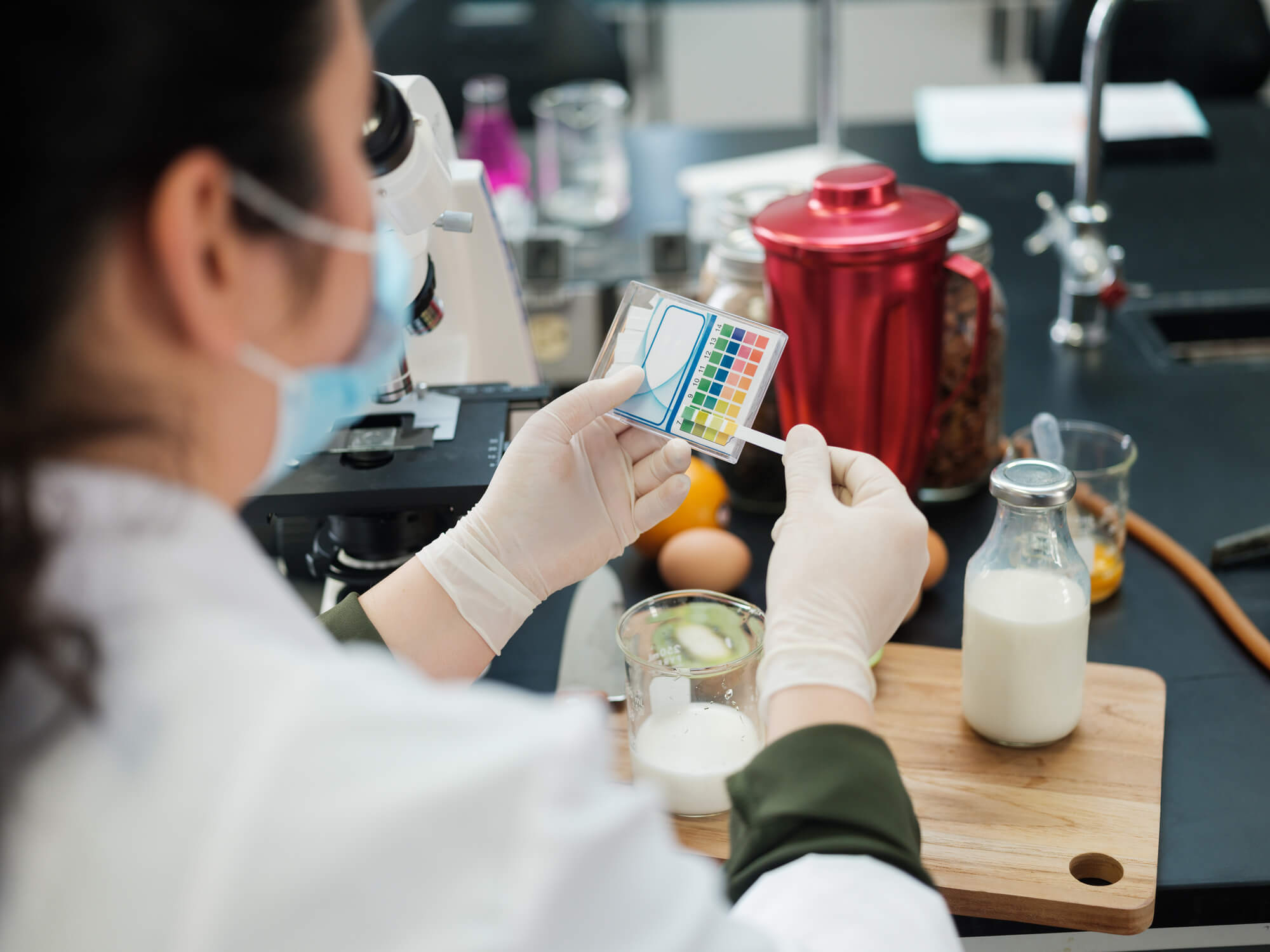Food chemistry
Overall Course Objectives
The course will give the student the ability to apply food chemistry knowledge to foods. This includes chemical reactions and physical changes that involve, e.g., lipids, proteins and carbohydrates, and the effect of these reactions/changes on the macroscopic food properties. The course enables the students to evaluate the influence of processing and storage on selected food items (e.g. meat, fish, cereals, vegetables).
See course description in Danish
Learning Objectives
- Identify and describe food components, classify them according to their chemical composition and list their functions
- Describe chemical reactions and physical changes occurring during processing (production, home food preparation) and storage of food
- Discuss how chemical reactions and physical changes during processing or storage can be enhanced or mitigated
- Relate chemical reactions and physical changes to macroscopic food properties
- Describe important chemical reactions and physical changes for selected food items
- Discuss important chemical reactions and physical changes for selected food items
- Make a concise written report on the physico-chemical aspects of a selected food item
- Present a scientific paper related to food chemistry
Course Content
The course will consist of a general description of water, carbohydrates, proteins, lipids, minerals, vitamins, antioxidants, emulsions, food improvement agents, micro- and nanoparticles and their chemical reactions (e.g. Maillard reaction, lipid oxidation) and physical changes in relation to food. The students will apply the obtained knowledge to a selected food item and present their findings in the form of a poster and a written report. In addition, the students will practice the presentation of data from scientific manuscripts about food chemistry aspects.
Teaching Method
Plenum, group work, report writing
Faculty
Limited number of seats
Minimum: 8, Maximum: 42.
Please be aware that this course has a minimum requirement for the number of participants needed, in order for it to be held. If these requirements are not met, then the course will not be held. Furthermore, there is a limited number of seats available. If there are too many applicants, a pool will be created for the remainder of the qualified applicants, and they will be selected at random. You will be informed 8 days before the start of the course, whether you have been allocated a spot.




